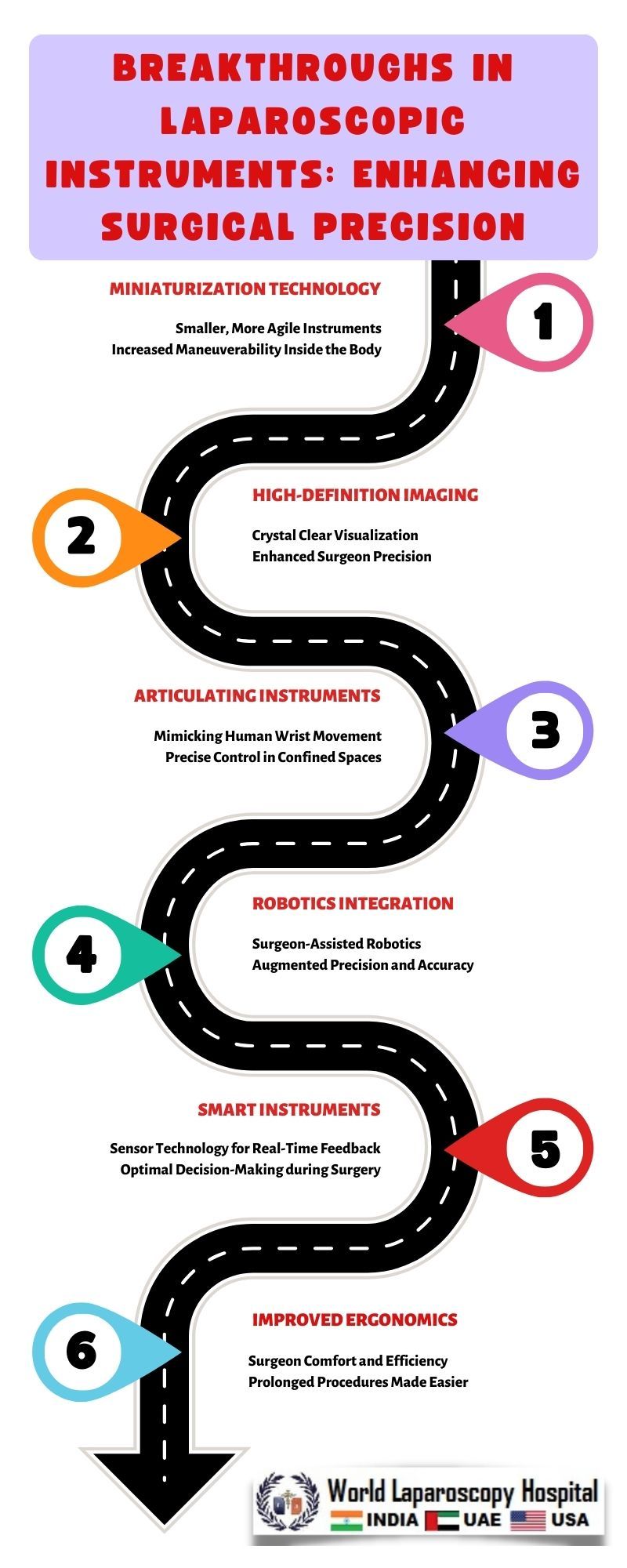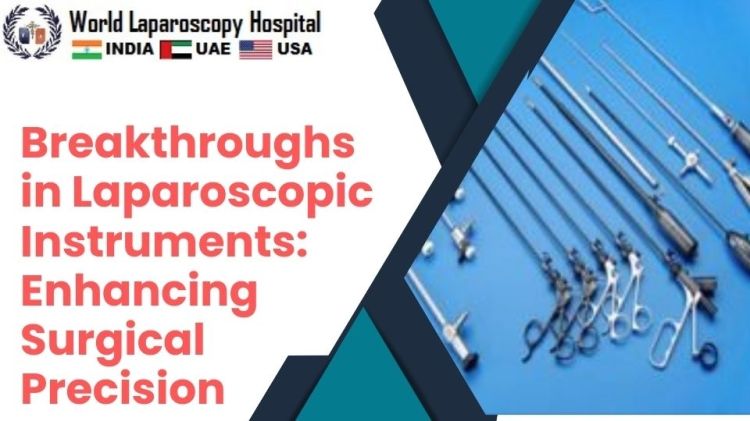Breakthroughs in Laparoscopic Instruments: Enhancing Surgical Precision
Introduction:
In the ever-evolving landscape of medical technology, breakthroughs in laparoscopic instruments have taken center stage, revolutionizing surgical practices and significantly enhancing precision. Laparoscopy, a minimally invasive surgical technique, has become increasingly popular for its numerous advantages, including shorter recovery times, reduced postoperative pain, and smaller incisions. Recent innovations in laparoscopic instruments have further propelled this technique to new heights, allowing surgeons to perform complex procedures with unprecedented accuracy.

Evolution of Laparoscopic Surgery:
Laparoscopic surgery, also known as keyhole surgery, has come a long way since its inception. Originally introduced in the early 20th century, the technique faced initial skepticism due to technological limitations. However, advancements in optics, imaging, and instrument design over the decades have transformed laparoscopy into a cornerstone of modern surgical practices.
Miniaturization:
One of the key breakthroughs in laparoscopic instruments is the ongoing trend of miniaturization. Smaller instruments enable surgeons to make tinier incisions, reducing trauma to surrounding tissues and minimizing scarring. Microscopic cameras and specialized tools, such as robotic arms, now provide surgeons with a magnified view of the surgical site, allowing for meticulous precision.
Advanced Imaging Technologies:
The integration of advanced imaging technologies has been pivotal in enhancing the accuracy of laparoscopic procedures. High-definition cameras, coupled with 3D imaging, provide surgeons with a detailed and immersive view of the operative field. This heightened visibility allows for better identification of anatomical structures, improving the overall safety and success of the surgery.
Artificial Intelligence in Laparoscopy:
The marriage of laparoscopic surgery and artificial intelligence (AI) has opened new frontiers in surgical precision. AI algorithms can analyze real-time data from imaging systems, offering decision support to surgeons. This not only aids in identifying critical structures but also assists in predicting potential complications, further reducing the margin of error.
Haptic Feedback Systems:
Recent developments in haptic feedback systems have addressed a longstanding challenge in laparoscopic surgery – the lack of tactile feedback. Surgeons traditionally rely on their sense of touch to navigate tissues and organs during open surgery, a luxury not afforded in laparoscopy. However, emerging haptic technologies provide surgeons with a sense of touch through robotic instruments, enhancing their ability to perceive tissue characteristics and make informed decisions during the procedure.
Single-Incision Laparoscopic Surgery:
A notable breakthrough in laparoscopic instruments is the advent of single-incision laparoscopic surgery (SILS). Traditionally, laparoscopy involves multiple small incisions, each accommodating a different instrument. SILS, however, consolidates multiple tools into a single access point, usually in the patient's umbilicus. This approach further reduces scarring and offers potential cosmetic benefits while maintaining surgical precision.
Energy Devices in Laparoscopy:
The development of advanced energy devices has significantly contributed to the efficacy of laparoscopic procedures. Ultrasonic shears, electrosurgical devices, and laser technology allow for precise cutting and coagulation of tissues. These tools not only expedite surgical processes but also contribute to reduced blood loss and quicker recovery times for patients.
3D Printing for Customized Instruments:
In the realm of personalized medicine, 3D printing has emerged as a game-changer for creating customized laparoscopic instruments. Surgeons can now design and manufacture instruments tailored to the specific needs of a patient or a particular procedure. This level of customization ensures optimal functionality and enhances the surgeon's ability to navigate unique anatomies.
Training Simulators and Virtual Reality:
The integration of training simulators and virtual reality (VR) in laparoscopic surgery education has reshaped the way surgeons acquire and hone their skills. Simulators offer a risk-free environment for trainees to practice various procedures, improving hand-eye coordination and familiarizing them with different scenarios. VR, on the other hand, immerses surgeons in realistic surgical simulations, providing a valuable platform for continuous learning and skill development.
Challenges and Future Directions:
Despite the remarkable strides in laparoscopic instruments, challenges persist. Surgeons must adapt to rapidly evolving technologies, and there are ongoing concerns about the cost of implementing these innovations. Moreover, standardization of procedures and ensuring accessibility to advanced laparoscopic techniques globally remain areas of focus.
Looking ahead, the future of laparoscopic instruments holds exciting possibilities. Nanotechnology, biohybrid robots, and further advancements in AI are anticipated to push the boundaries of surgical precision even further. Collaborations between engineers, surgeons, and researchers will be crucial in driving innovation and overcoming the remaining challenges in this dynamic field.
Conclusion:
Breakthroughs in laparoscopic instruments have ushered in a new era of surgical precision, offering patients less invasive procedures with faster recovery times and improved outcomes. From miniaturization to AI integration, each innovation contributes to the refinement of laparoscopic techniques. As technology continues to advance, the symbiotic relationship between surgical expertise and cutting-edge instruments will undoubtedly reshape the future of healthcare, making surgery safer, more efficient, and more accessible worldwide.








